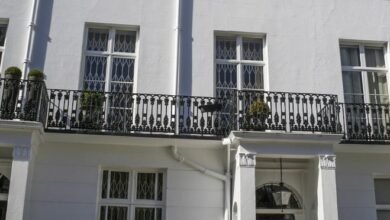Tax considerations when buying and selling residential property

It has often been the case in the past, for a number of reasons, where a residential property was acquired by a company or close corporation, rather than the individual.

One of the reasons for this type of structuring in the past was the fact that the disposal of the immovable property itself would result in transfer duty at (current) rates ranging from 3% – 13%. On the other hand, stamp duty (as it was at that point in time) of 0.25% of the (market) value or consideration was payable for the residential property, whichever was higher.
This perceived abuse was closed down by a change in the definition of “property” in the transfer duty legislation insofar as residential property held by a company was concerned.
Whether an individual seller sells a residential property in his or her own name, whether residential property shares are disposed of or whether the residential property is sold out of the company, will result in differing capital gains tax (CGT) and tax liabilities for the seller. Depending on the exact facts, the differing tax treatments may be material.
Assumptions: Assume the original base cost (original purchase price) of the residential property was R2,000,000. Assume the residential property is sold for R5,000,000. This does not take into account base cost expenditure incurred on improvements, renovations or enhancements to the residential property with respect to scenario’s 1 and 3 below.
Scenario 1 – the individual owns the property
The capital gain on the disposal of the residential property will be R3,000,000 (R5,000,000 – R2,000,000).
If the individual meets the requirements of the ‘primary residence exclusion’ (ie. the individual has ordinarily resided in the residence as his or her main residence, and such residence has been used mainly for domestic purposes) contained in the CGT legislation, such individual when determining his or her aggregate capital gain, must disregard so much of the capital gain as does not exceed R2,000,000.
In the current example, this would result in an aggregate capital of R1,000,000 (R3,000,000 – R2,000,000).
Assuming that the individual is subject to the maximum effective CGT rate of 18% (40% of the gain is taxed at 45%), this results in a CGT liability of R180,000 (R1,000,000 x 18%).
Total tax (CGT liability): R180,000
Scenario 2 – the individual owns the residential property through a company – sale of shares
In this scenario, the individual sells his property-rich shares. This can prove a challenge if the seller cannot prove the base cost for CGT purposes of the shares themselves (this may or may not be the R2m originally paid for the property by the company).
This will depend, amongst other things, on how the company was originally funded in order to acquire the residential property or to undertake any improvements or enhancements to the property.
If the base cost of the shares (ie. an amount of R2,000,000) can be proved, the CGT liability will be calculated at R540,000 (R3,000,000 x 18%). The ‘primary residence exclusion’ will not be available as would be the case with Scenario 1.
Assuming that the original base cost of the shares cannot be proved, the ‘20% of proceeds method’ may be used as a basis of determining base cost. This method would result in a base cost of R1,000,000 for the shares, resulting in a capital gain in the hands of the seller of R720,000 (R4,000,000 x 18%). Again, the ‘primary residence exclusion’ will not be available.
Total tax (CGT) liability: R540,000 – R720,000 (depending on whether original base cost in the shares themselves are able to be proved).
Scenario 3 – individual owns the residential property through a company – the company disposes of the residential property
In this scenario, the company will be liable for CGT of R648,000 (ie. 80% of the gain of R3,000,000 is subject to the corporate income tax rate of 27%). Again, as with scenario 2, the ‘primary residence exclusion‘ will not be available.
Further, however, what happens if the individual owning the shares needs his cash? If the net proceeds from the disposal of the property after CGT are paid by the company to the individual, this amount will be subject to the dividend withholding of 20%. An amount of R470 400 dividends tax will accordingly be payable (R2,352,000 x 20%).
Total tax (CGT) liability: R1,118,400 (CGT of R648,000 + dividends tax of R470,400)
In conclusion, in deciding how to acquire a residential property and how to structure the ownership of such property, depends on many factors, including commercial and financial factors such as the cost of the property, the proving of base cost expenditure in the future, the property’s anticipated capital growth, the level of renovation/improvement required, how long the property will be held, the funding of the acquisition of the property itself or the property-owning company, etc.
What should not be forgotten, however, in considering the very basic fact pattern contained in the scenario’s above, is that it is evident in the end that sometimes the simplest solution is the best solution.
Source link






